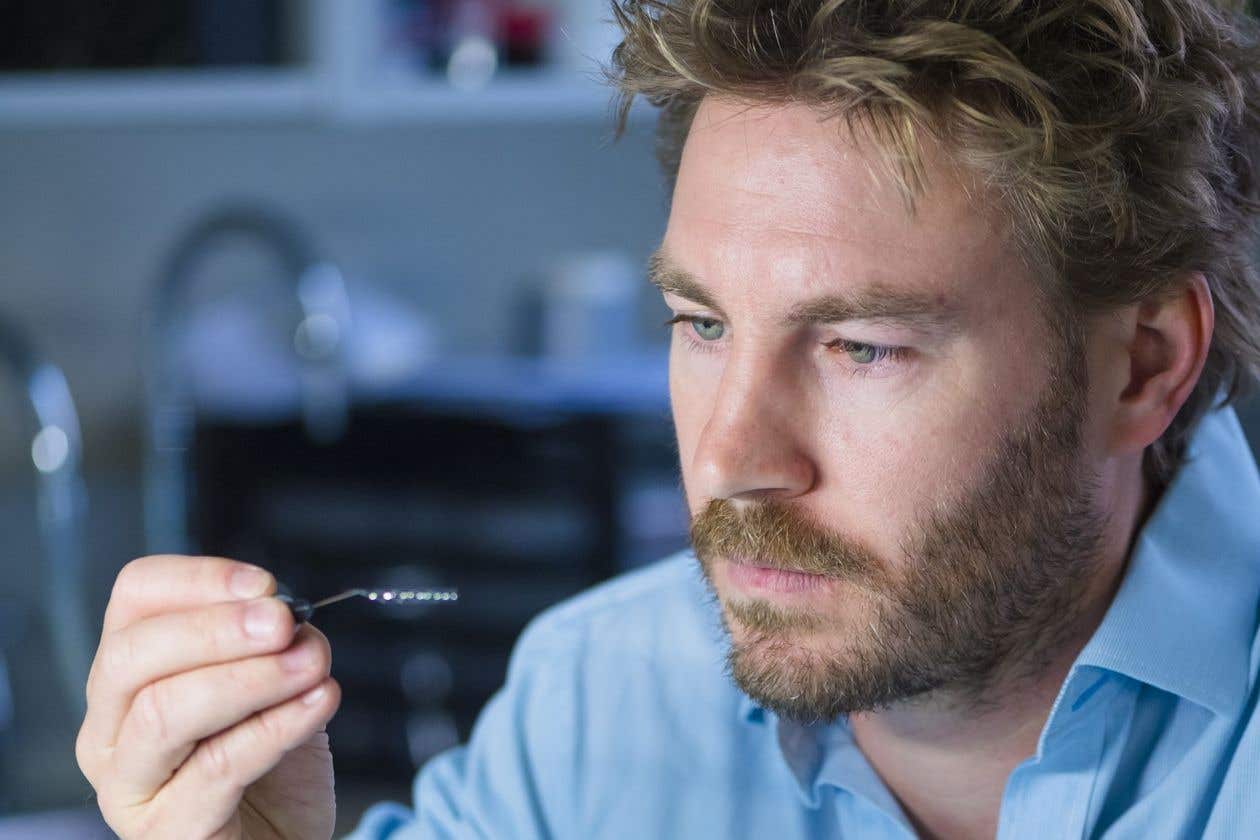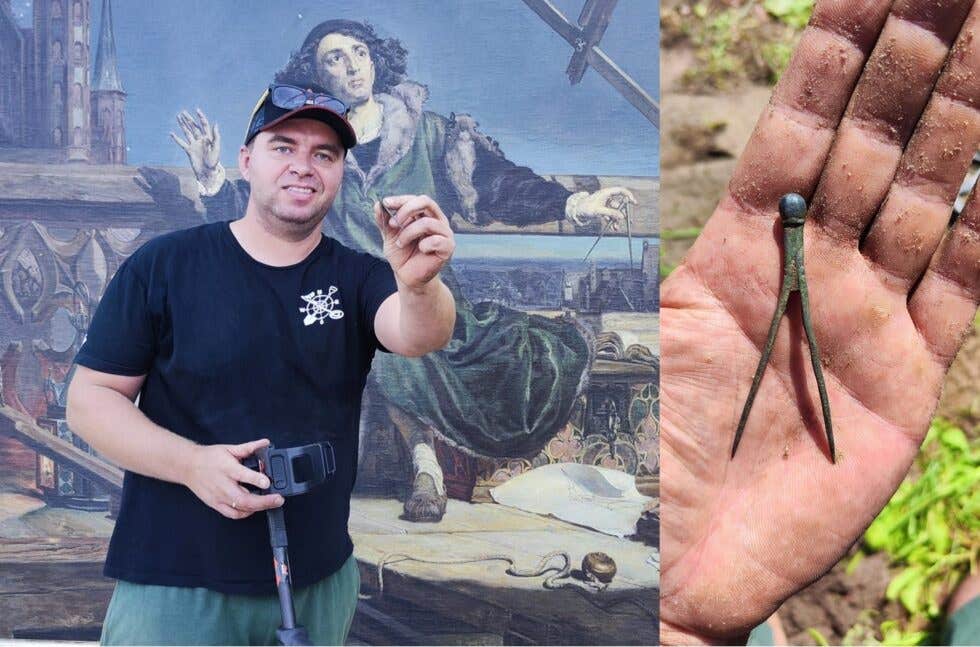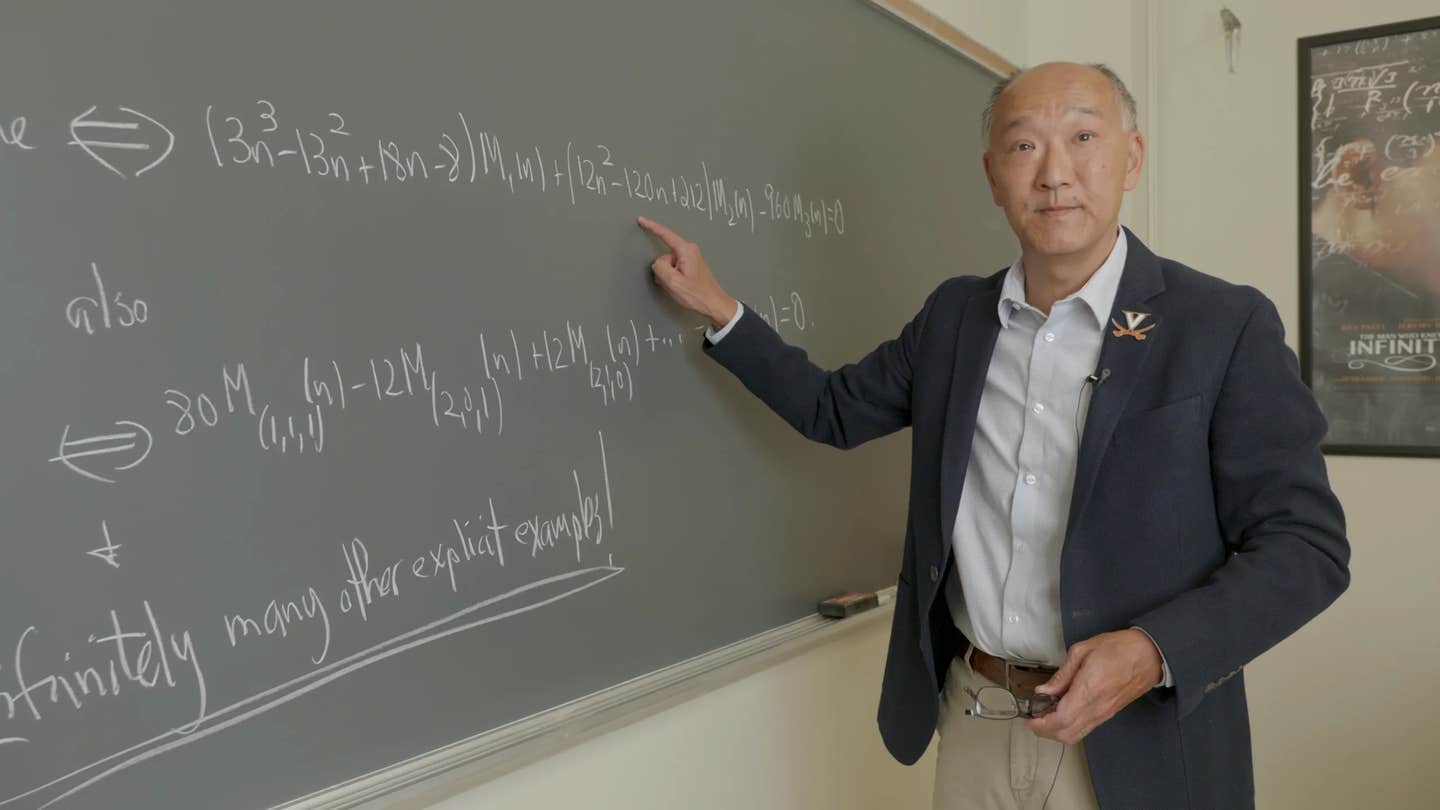Small brain device proves big game changer for severely paralysed patients
A tiny device the size of a small paperclip has been shown to help patients with upper limb paralysis to text, email and even shop online

[Oct. 28, 2020: University of Melbourne]
The device, Stentrode™, has been implanted successfully in two patients, who both suffer from severe paralysis due to amyotrophic lateral sclerosis (ALS) -- also known as motor neuron disease (MND) -- and neither had the ability to move their upper limbs.
Published in the Journal of NeuroInterventional Surgery, the results found the Stentrode™ was able to wirelessly restore the transmission of brain impulses out of the body. This enabled the patients to successfully complete daily tasks such as online banking, shopping and texting, which previously had not been available to them.
The Royal Melbourne Hospital's Professor Peter Mitchell, Neurointervention Service Director and principal investigator on the trial, said the findings were promising and demonstrate the device can be safely implanted and used within the patients.
"This is the first time an operation of this kind has been done, so we couldn't guarantee there wouldn't be problems, but in both cases the surgery has gone better than we had hoped," Professor Mitchell said.
Professor Mitchell implanted the device on the study participants through their blood vessels, next to the brain's motor cortex, in a procedure involving a small 'keyhole' incision in the neck.
"The procedure isn't easy, in each surgery there were differences depending on the patient's anatomy, however in both cases the patients were able to leave the hospital only a few days later, which also demonstrates the quick recovery from the surgery," Professor Mitchell said.
Neurointerventionalist and CEO of Synchron -- the research commercial partner -- Associate Professor Thomas Oxley, said this was a breakthrough moment for the field of brain-computer interfaces.
"We are excited to report that we have delivered a fully implantable, take home, wireless technology that does not require open brain surgery, which functions to restore freedoms for people with severe disability," Associate Professor Oxley, who is also co-head of the Vascular Bionics Laboratory at the University of Melbourne, said.
The two patients used the Stentrode™ to control the computer-based operating system, in combination with an eye-tracker for cursor navigation. This meant they did not need a mouse or keyboard.
They also undertook machine learning-assisted training to control multiple mouse click actions, including zoom and left click. The first two patients achieved an average click accuracy of 92 per cent and 93 per cent, respectively, and typing speeds of 14 and 20 characters per minute with predictive text disabled.
Like these kind of stories? Get The Brighter Side of News' newsletter.
University of Melbourne Associate Professor Nicholas Opie, co-head of the Vascular Bionics Laboratory at the University and founding chief technology officer of Synchron said the developments were exciting and the patients involved had a level of freedom restored in their lives.
"Observing the participants use the system to communicate and control a computer with their minds, independently and at home, is truly amazing," Associate Professor Opie said.
"We are thankful to work with such fantastic participants, and my colleagues and I are honoured to make a difference in their lives. I hope others are inspired by their success.
"Over the last eight years we have drawn on some of the world's leading medical and engineering minds to create an implant that enables people with paralysis to control external equipment with the power of thought. We are pleased to report that we have achieved this."
The researchers caution that while it is some years away before the technology, capable of returning independence to complete everyday tasks is publicly available, the global, multidisciplinary team is working tirelessly to make this a reality.
The trial recently received a $AU1.48 million grant from the Australian commonwealth government to expand the trial to hospitals in New South Wales and Queensland, with hopes to enroll more patients.
Story Source:
Materials provided by University of Melbourne.
Tags: #University_of_Melbourne, #New_Innovations, #Brain_News, #Medical_Good_News, #Australia, #Melbourne
Joseph Shavit
Head Science News Writer | Communicating Innovation & Discovery
Based in Los Angeles, Joseph Shavit is an accomplished science journalist, head science news writer and co-founder at The Brighter Side of News, where he translates cutting-edge discoveries into compelling stories for a broad audience. With a strong background spanning science, business, product management, media leadership, and entrepreneurship, Joseph brings a unique perspective to science communication. His expertise allows him to uncover the intersection of technological advancements and market potential, shedding light on how groundbreaking research evolves into transformative products and industries.



